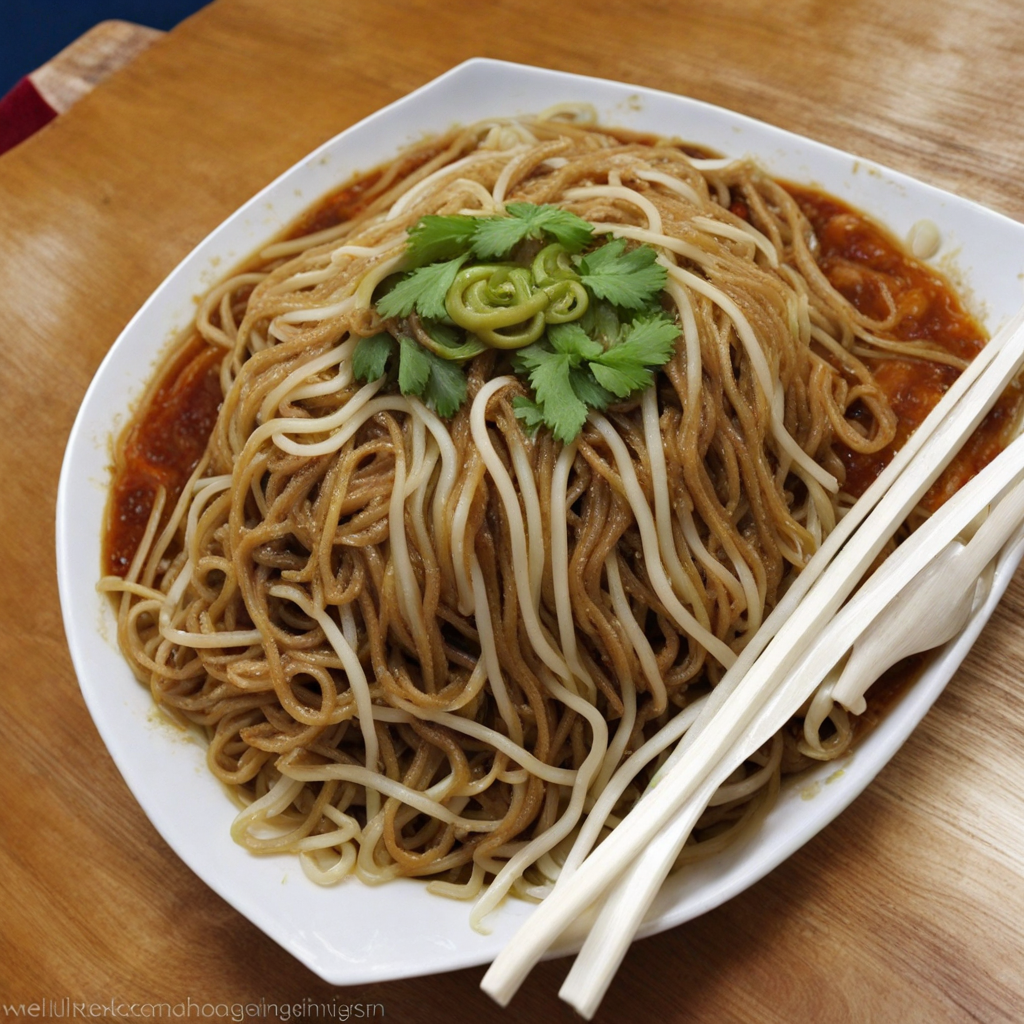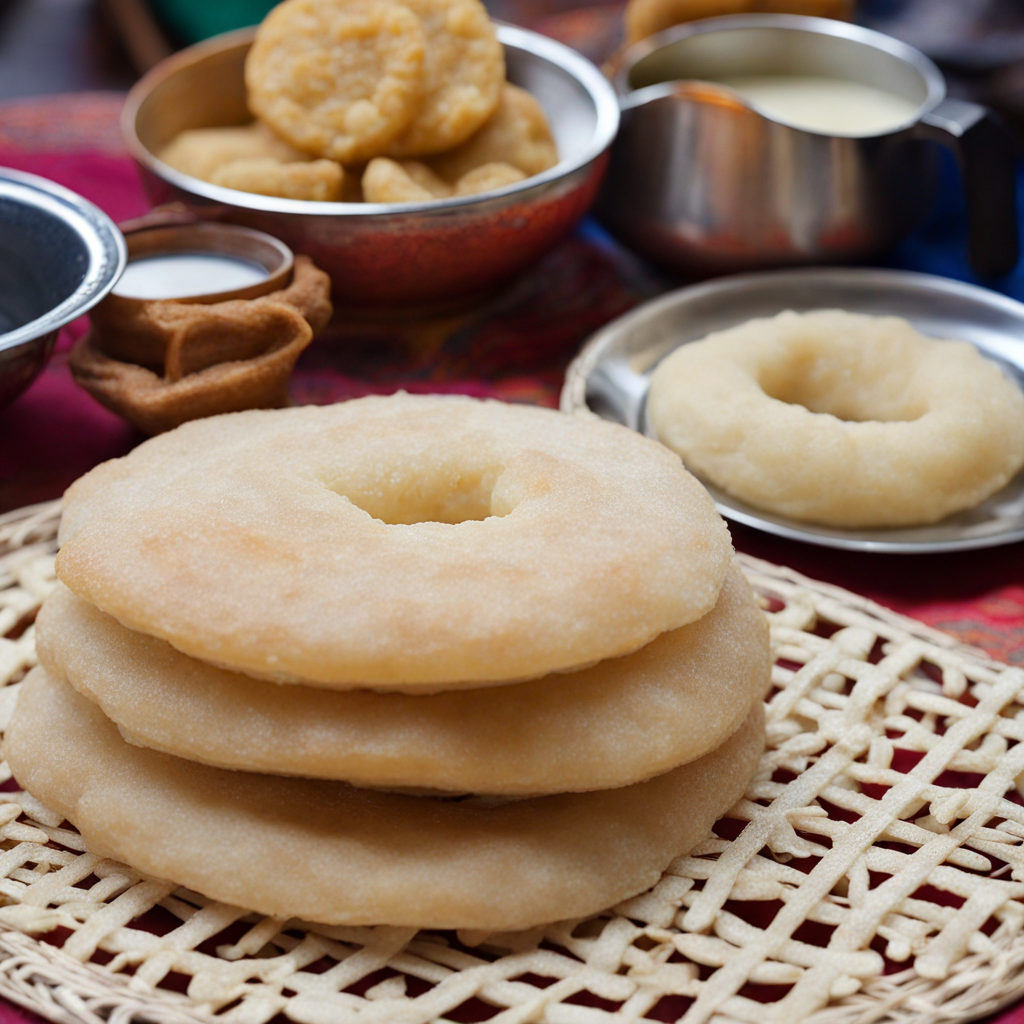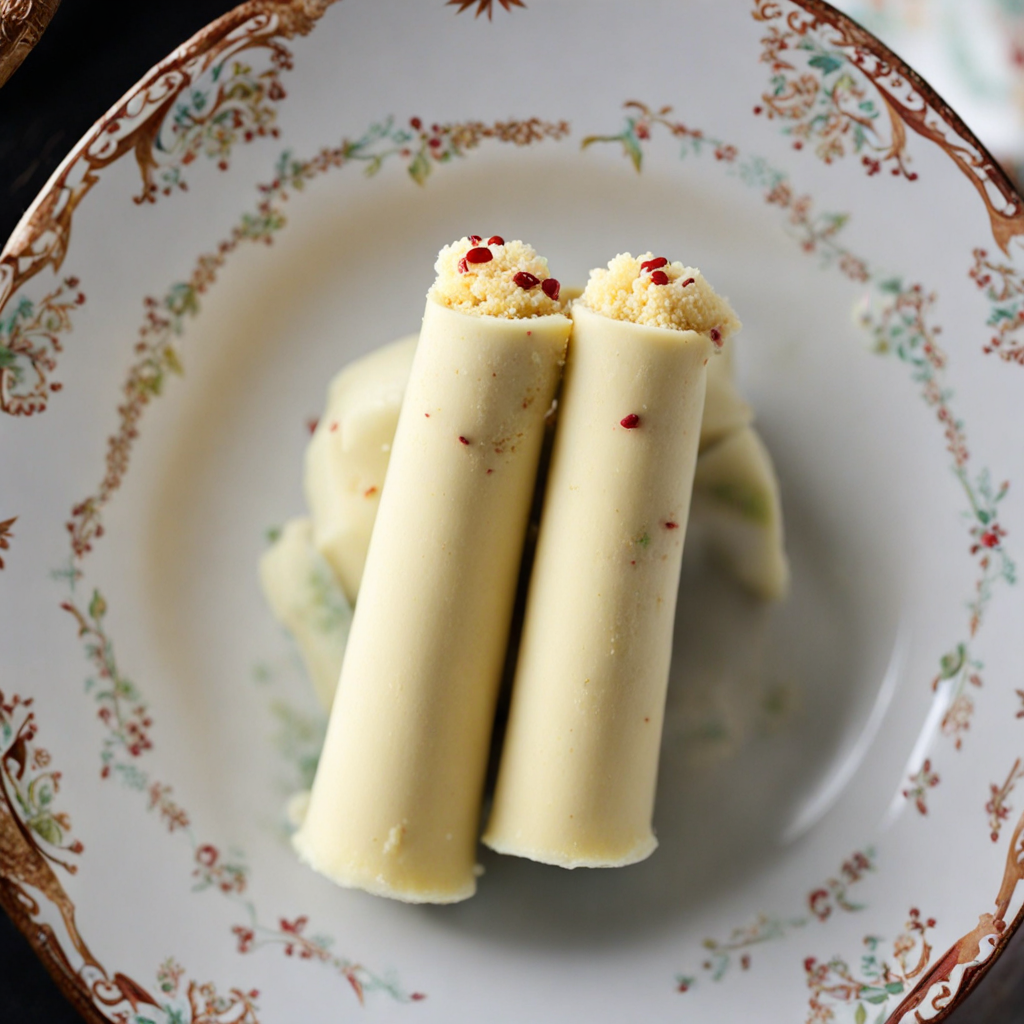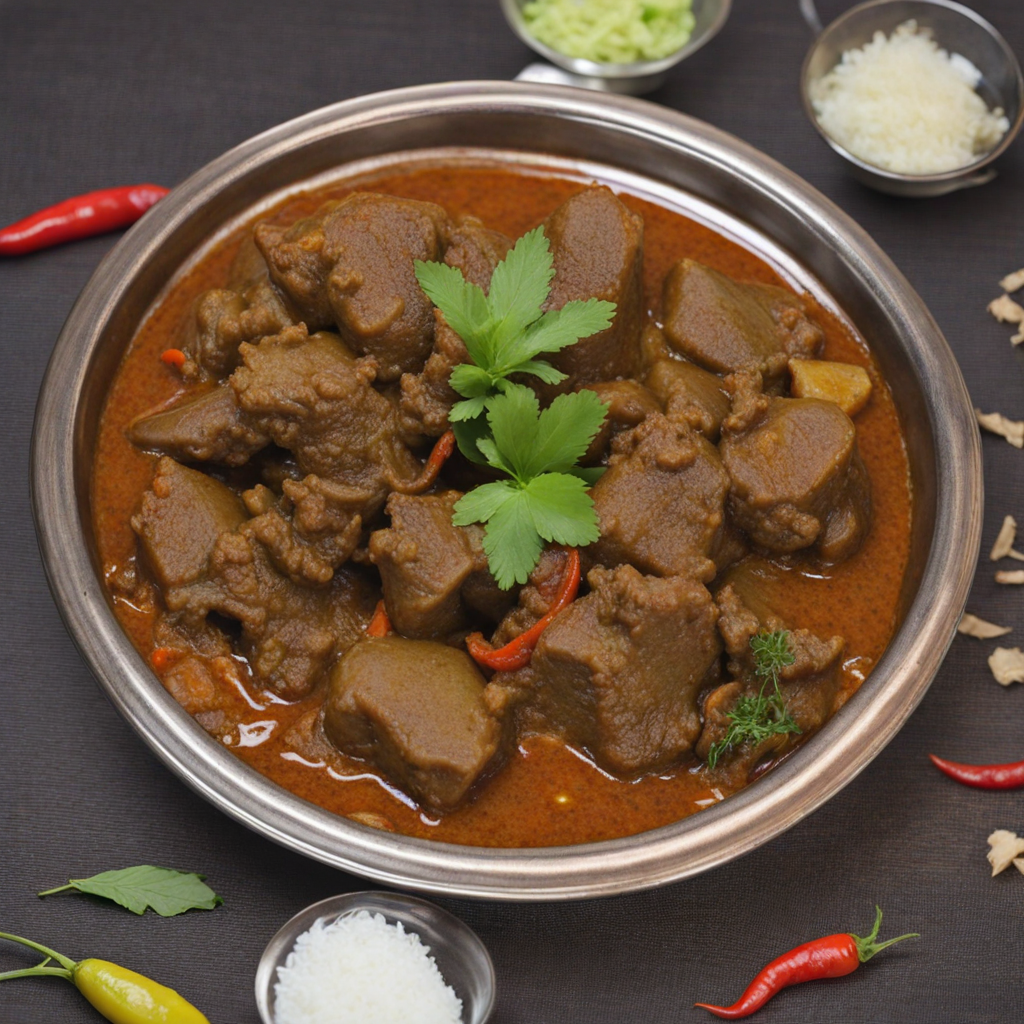Laphing
Laphing is a delightful and unique dish that hails from the vibrant streets of Nepal, particularly popular among the Tibetan and Newar communities. This cold noodle salad is made primarily from starch, often derived from mung beans or potatoes, which is then transformed into a jelly-like texture. The noodles are typically served chilled, making them a refreshing choice, especially during warm weather. The presentation is often colorful, with an array of garnishes that enhance both the visual appeal and flavor of the dish, creating a feast for the senses. What sets Laphing apart is its bold and zesty dressing, which usually includes a captivating blend of sesame oil, vinegar, and a hint of chili for that perfect kick. The dish is often accompanied by a medley of toppings, such as finely chopped scallions, cilantro, and sometimes even a sprinkle of roasted peanuts or sesame seeds for an added crunch. The combination of the silky noodles and the tangy sauce creates a harmonious balance that dances on the palate, making it a must-try for adventurous food lovers. Laphing is not only a dish that tantalizes the taste buds but also embodies the communal spirit of Nepalese culture. It is often enjoyed as a street food, bringing people together in bustling markets and food stalls. The experience of savoring Laphing is as much about the flavors as it is about the atmosphere, where the lively chatter and the aroma of spices envelop you. Whether you’re enjoying it as a quick snack or as part of a larger meal, Laphing offers a refreshing journey into the heart of Nepalese culinary traditions.
How It Became This Dish
The Enigmatic Laping: A Culinary Journey Through Nepal #### Origins of Laping Laping, a beloved dish in Nepal, particularly among the Newar community, is a type of cold noodle salad that tantalizes the taste buds with its unique textures and flavors. The dish's origins can be traced back to the Newar culture of the Kathmandu Valley, where diverse culinary traditions intersect. The Newars, an indigenous ethnic group, are renowned for their rich gastronomic heritage, often incorporating influences from Tibetan, Indian, and even Chinese cuisines. The word 'lapping' is derived from the Tibetan term 'laphing,' which refers to cold noodles. This indicates the dish's roots may extend beyond Nepal, reflecting the historical trade routes and cultural exchanges that have shaped the region's culinary landscape. The use of rice flour to make the noodles is particularly significant; it highlights the agricultural practices prevalent in the Kathmandu Valley, where rice has been a staple crop for centuries. #### Cultural Significance Laping is more than just a dish; it holds a special place in the social and cultural fabric of Nepal. Traditionally, it is enjoyed during festivals, family gatherings, and communal celebrations, symbolizing unity and togetherness. The Newars are known for their elaborate feasts, and laping often makes an appearance alongside other traditional foods like "momo" (dumplings) and "bara" (fried lentil patties). The process of making laping is communal, often involving family members or friends coming together to prepare the dish. This communal aspect reinforces social bonds and reflects the Newar philosophy of sharing food as a way to strengthen relationships. Laping is also a popular street food, making it accessible to all, and it has become a cultural icon in urban areas like Kathmandu and Bhaktapur. #### Ingredients and Preparation The primary component of laping is the rice noodle, which is traditionally made by steaming a rice flour batter and then cutting it into thin strips. The noodles are then tossed with a variety of ingredients, including finely chopped vegetables such as carrots, cucumbers, and green onions, and are often served with a spicy sesame or chili sauce. The dish can be customized according to personal preferences, with various toppings like boiled eggs, peanuts, or a sprinkle of coriander. A notable feature of laping is its refreshing quality, making it a popular choice during the hot summer months. The cooling effect of the dish, combined with its vibrant flavors, provides a delightful culinary experience that is both satisfying and invigorating. #### Evolution Over Time As with many traditional dishes, laping has evolved over time, adapting to changing tastes and culinary trends. In the past, laping was primarily enjoyed within the Newar community, but its popularity has spread beyond ethnic boundaries. Today, it is a common sight at food stalls and restaurants across Nepal, appealing to locals and tourists alike. The globalization of food culture has also played a role in the evolution of laping. As Nepal has become more connected to the world through tourism and migration, variations of laping have emerged, influenced by international cuisines. For instance, some modern interpretations incorporate ingredients like avocado or fusion sauces, reflecting a blend of traditional and contemporary culinary practices. #### Modern-Day Laping In today's fast-paced world, laping retains its essence while embracing innovation. Street vendors and restaurants offer their unique takes on this classic dish, with some opting for vegetarian versions while others include meat options. The rise of health-conscious eating has led to variations that feature whole grain noodles or additional superfoods, catering to a diverse audience. Furthermore, laping has found its way onto social media platforms, where food bloggers and enthusiasts showcase their culinary creations. This has not only increased its visibility but has also inspired a new generation to explore and appreciate traditional Nepalese cuisine. The vibrant colors and textures of laping make it an Instagram-worthy dish, further fueling its popularity among younger consumers. #### Laping and Culinary Identity The evolution of laping reflects broader trends in Nepalese society, where modernization coexists with tradition. The dish serves as a reminder of the importance of cultural heritage, even as it adapts to contemporary tastes. It is a testament to the resilience of traditional foods and their ability to evolve while maintaining their core identity. In Nepal, food is a powerful medium for storytelling, and laping embodies the rich narratives of the Newar community. The preparation and enjoyment of laping are steeped in ritual, from the careful crafting of the noodles to the shared experience of eating together. This communal aspect underscores the dish's role in fostering connections among people, transcending ethnic and cultural boundaries. #### Conclusion Laping is far more than just a cold noodle salad; it is a culinary emblem of Nepal’s rich cultural heritage. Its origins in the Newar community, coupled with its evolution over time, showcase the dynamic nature of food as it interacts with historical, social, and cultural contexts. Today, laping stands as a symbol of unity, diversity, and resilience, inviting people from all walks of life to come together and relish in the flavors of Nepal. As we savor this delightful dish, we are reminded of the stories it carries, the traditions it honors, and the connections it fosters. Whether enjoyed at a bustling street stall in Kathmandu or shared among friends at a family gathering, laping continues to be a delicious testament to the enduring spirit of Nepalese culture.
You may like
Discover local flavors from Nepal







